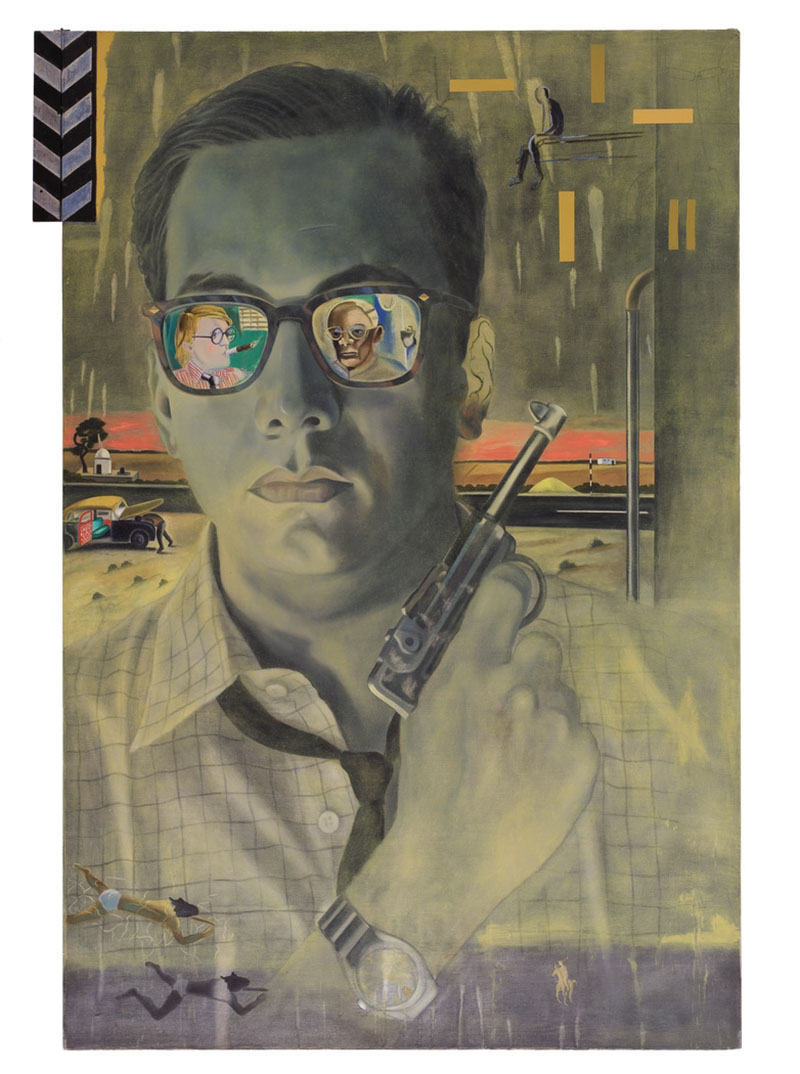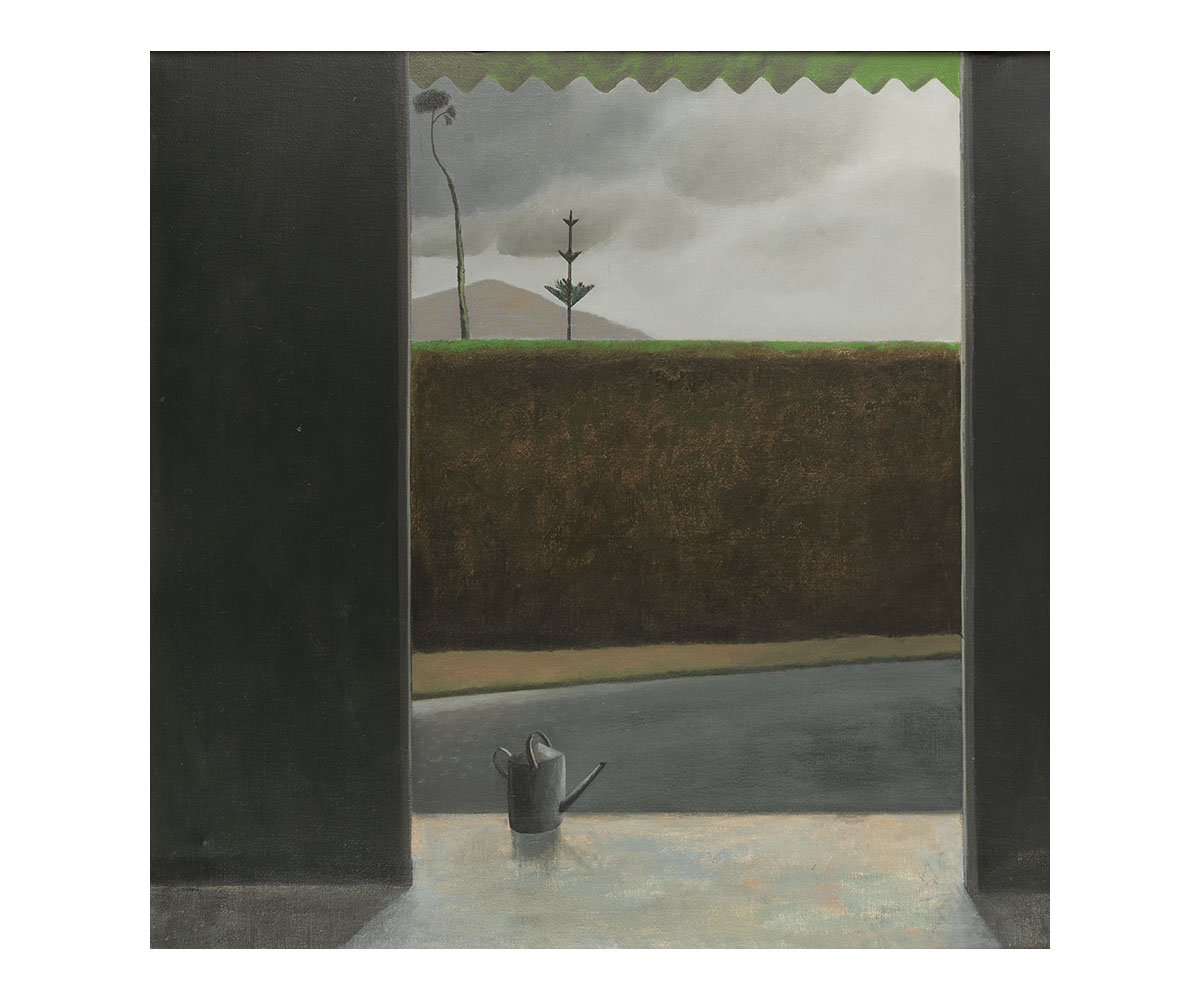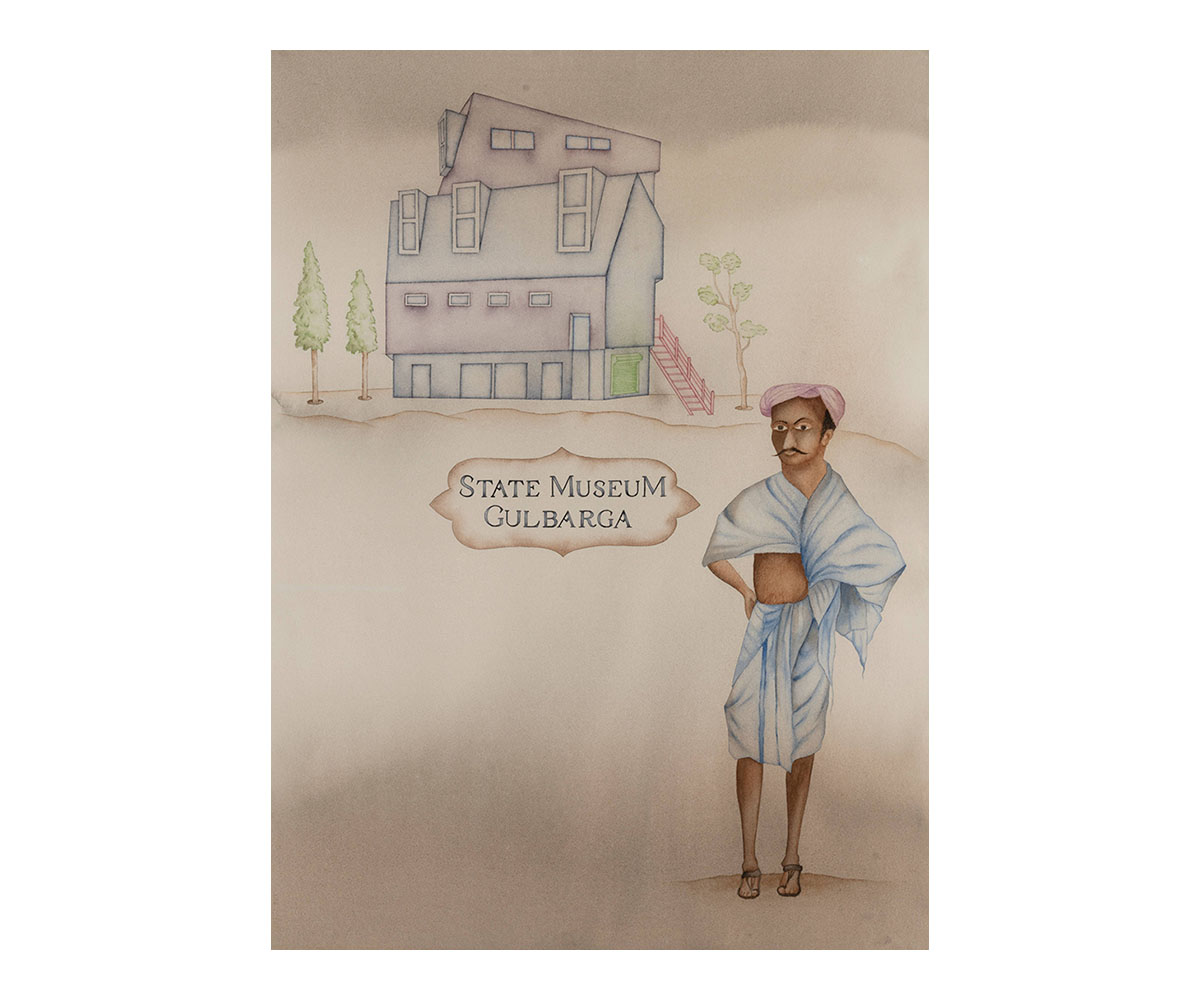ARTICLE
Atul Dodiya
In his works such as Lamentation (1997) and Bapu (1998), Dodiya reinstates the ideals of secularism, peace and tolerance as espoused by Mahatma Gandhi in an increasingly violent and fundamentalist political sphere. Through Gandhi, Dodiya also reflects on his personal life as well as their shared Gujarati identity. In An Artist of Non-Violence (1999), he merges Gandhi’s biography with history and animates fragments from his quotidian life through the pages of his diary. In another project, Bako Exists (2011), he presents an imaginary friendship between Gandhi and Bako, a protagonist in the writings of the Gujarati poet, Labhshanker Thaker.
In his landmark installation Broken Branches (2003) Dodiya assembled wooden cabinets filled with an assortment of found objects, prosthetic limbs and construction materials. Since 2003, he has produced installations using the cabinet, such as Meditation (with open eyes, 2011) and Fragrance of a Paper Rose (2018) which place an assembly of references and objects, and through them, histories in renewed contexts. His reflection on cultural history and as well as disciplinary trajectories of art and culture have manifested in his photo-installation Celebration in the Laboratory (2012) at the Kochi Muziris Biennale and 7000 Museums: A Project for the Republic of India at the Dr. Bhau Daji Lad Museum. While the former celebrates figures who have nurtured cultural infrastructure in India, the latter reflects on its lacunae and instead proposes museums in towns and cities through a series of watercolour paintings.
His solo exhibitions have been mounted at institutions such as Chemould Prescott Road (Mumbai, India), Dr. Bhau Daji Lad Museum (Mumbai, India), Vadehra Art Gallery (New Delhi, India), Bose Pacia (New York, USA), Singapore Tyler Print Institute, Galerie Daniel Templon (Paris, France), Contemporary Arts Centre (Cincinnati, USA), and Reina Sofia Museum (Madrid, Spain). His mid-career retrospective was held in 2001, at the Japan Foundation Asia Centre (Tokyo, Japan). His work has been exhibited widely in institutions and is part of several public and private collections including Queens Museum (New York, USA), Haus der Kulturen der Welt (Berlin, Germany), Centre Pompidou (Paris, France), Ecole Nationale Supérieure des Beaux-Arts (Paris, France), Museo Temporario / Culturgest (Lisbon, Portugal), Kunstmuseum (Bern, Switzerland), Pirelli Hangar Bicocca (Milan, Italy), Mori Art Museum (Tokyo, Japan), Jehangir Nicholson Gallery (Mumbai, India), Kiran Nadar Museum of Art (New Delhi, India) and National Gallery of Modern Art (NGMA, Mumbai and New Delhi, India), among others.
Dodiya is married to fellow artist Anju Dodiya and at the time of writing, he lives and works in Mumbai.
Bibliography
Our website is currently undergoing maintenance and re-design, due to which we have had to take down some of our bibliographies. While these will be re-published shortly, you can request references for specific articles by writing to hellomapacademy@map-india.org.










